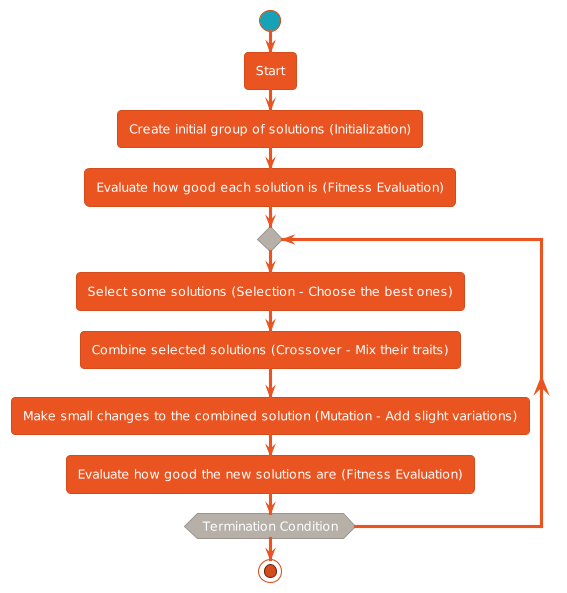Genetic Algorithms
14 May 2023
Genetic Algorithms (GAs) are powerful problem-solving techniques inspired by the principles of natural evolution and genetics. They provide a way to search for optimal solutions to complex problems by imitating the process of natural selection. In this article, we will explore the origins of genetic algorithms and understand the essential components such as crossover, mutation, and fitness functions that make them effective tools for problem-solving.
Origin of Genetic Algorithms:
Genetic Algorithms were first introduced by John Holland in the 1960s. Holland was inspired by the concept of evolution, where organisms undergo continuous adaptation and improvement through generations. He realized that similar principles could be applied to problem-solving, leading to the development of genetic algorithms.
How do Genetic Algorithms Work?

Step 1: Initialization:
To begin with, a genetic algorithm creates an initial population of potential solutions. Each solution is represented as a string of genes, which can be thought of as the characteristics or attributes of the solution. For example, consider a problem of finding the shortest path between cities. Each solution can be represented as a string of city names in a specific order.
Step 2: Fitness Evaluation:
After initializing the population, the next step is to evaluate the fitness of each individual solution. The fitness function determines how well a solution solves the problem. It quantifies the quality of the solution based on specific criteria. In the case of the shortest path problem, the fitness function can measure the total distance traveled. Solutions with shorter distances will have higher fitness scores.
Step 3: Selection:
In the selection process, individuals with higher fitness have a higher chance of being chosen as parents for the next generation. This process mimics the idea of “survival of the fittest.” There are various selection methods available in genetic algorithms. One common method is roulette wheel selection, where individuals are selected with probabilities proportional to their fitness scores. Another method is tournament selection, where a subset of individuals competes, and the fittest individual is chosen as a parent.
Step 4: Crossover:
Crossover is a crucial step in genetic algorithms, inspired by genetic recombination in biology. It involves exchanging genetic information between two parent solutions to create offspring. Let’s consider an example where the problem is to find a binary string that matches a target string. In crossover, two parent solutions are selected, and a crossover point is chosen. The genes before the crossover point are exchanged between the parents, resulting in two offspring solutions that inherit traits from both parents. This process increases the diversity in the population and potentially leads to better solutions.
Step 5: Mutation:
Mutation introduces randomness into the population by randomly altering certain genes of an individual solution. This randomness ensures that the algorithm explores a wide range of potential solutions and prevents the algorithm from getting stuck in local optima. Returning to our binary string example, a mutation operation may flip a random bit in a solution. Mutation allows for the introduction of new traits that were not present in the original population, expanding the search space.
Step 6: Repeat Steps 2-5:
The steps of fitness evaluation, selection, crossover, and mutation are repeated iteratively until a termination condition is met. The termination condition can be a maximum number of generations, a desired level of fitness, or a specific number of iterations without improvement. With each iteration, the population evolves, and the solutions tend to improve over time.
Through the steps of initialization, fitness evaluation, selection, crossover, and mutation, these algorithms iteratively explore and refine a population of potential solutions.





